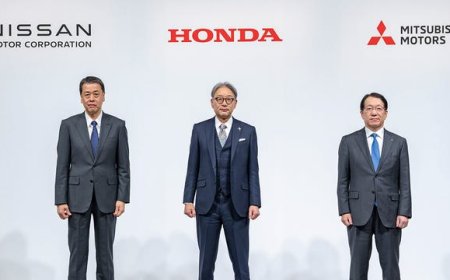The Toyota-Subaru partnership is a lot more involved below the surface
The Toyota-Subaru partnership is one of the most well known in the automotive industry, but it looks like this dynamic duo is just getting started.

Toyota and Subaru have a partnership that has spawned just two vehicles over the past few decades, but the Japanese automakers aren’t cutting ties anytime soon as they've just announced they’re working on three additional electric vehicles. While their first entries into the electric segment aren’t the greatest, their past models have proven they’re capable of creating iconic vehicles.
Related: The 5 best driver’s cars you can buy for less than $30,000 Subaru
Toyota owns 20% of Subaru
As of March 2024, Toyota owns just over 20% of Subaru, but it hasn’t always been that way. Nissan purchased shares of Fuji Heavy Industries, Subaru’s parent company, back in 1968. In 1999, Nissan sold its holdings to General Motors who then liquidated their stake in Fuji Heavy Industries in 2005. At that point, Toyota came onto the scene and purchased its initial 8.7% stake.
A few short years later, Toyota nearly doubled its stake in Fuji Heavy Industries, bringing its total stake to 16.5%. It was at that point the two companies announced they would jointly develop a compact sports car. Scion
In 2019, Toyota added to its stake, bringing its total holdings to 20.42% of Fuji Heavy Industries. Now owning a fifth of the company, Toyota has a more influential say in Subaru’s operations. While Subaru can be considered a subsidiary of Toyota, Toyota has no plans to buy Subaru outright - for the time being, at least.
Related: The Brunei Royal Family's collection is more extravagant than you can imagine
Joint partnership leads to sports cars and electric crossovers
The Toyota-Subaru joint partnership ultimately focused on sharing resources and production facilities. The two Japanese automakers have collaborated on a couple of vehicles, though. The Subaru BRZ and Toyota 86 were originally launched back in 2012, with the 86 also badged as the Scion FR-S. The sports car came equipped with a boxer engine and rear-wheel drivetrain packed into a fastback coupe body style.
The first generation ceased production in 2020 and the second generation quickly followed in 2021. While the Subaru BRZ kept its nameplate, the Toyota 86 became the GR86 thanks to work done by Gazoo Racing. Originally, the nameplate read “Toyota GR 86,” but the space was removed for digital marketing purposes. This time around, the sports car features more torsional rigidity thanks to elements from the Subaru Global Platform.
The Subaru Solterra and Toyota bZ4X were the result of the partnership’s first foray into the electric vehicle segment. The electric crossovers arrived for the 2023 model year and were met with mixed reception, largely due to their slow charging speeds and low driving range. While both models come equipped with all-wheel drive, a 227-mile driving range isn’t something to write home about. Fortunately, this won’t be the duo's only EV offering.
Toyota and Subaru will collaborate on three electric crossovers
Toyota and Subaru are set on continuing their partnership, with plans to bring three more electric crossovers to market through 2026 with no further information on the revealed just yet. The Japanese automakers' collaborative efforts primarily serve to reduce their individual risk in a segment that’s subject to constant change.
“At the moment, it is quite difficult to predict how things will go from here with EVs,” said Atsushi Osaki, Subaru CEO, in May 2024. “There is a huge risk for us to go it alone in this field. We have held talks with Toyota and have agreed that it is better to reduce risks through joint development.”
One of the benefits of a joint partnership comes in the form of saving resources, particularly space on production lines. For example, the Subaru BRZ and Toyota GR86 are built in Subaru’s Gunma factory, while the Toyota bZ4X and Solterra roll off Toyota’s Motomachi assembly line. Similarly, the duo’s next three electric vehicles will be built at Toyota’s production facilities in the United States. In doing so, those EVs will qualify for a federal tax credit, provided there is a tax credit in 2026.
Final thoughts
While the joint partnership has only produced two vehicles over nearly 20 years, there’s more to their collaboration than meets the eye. Toyota and Subaru have come a long way behind the scenes, sharing production facilities to save space as well as reduce research and transportation costs. That’s a smart business move no matter what way you look at it.
While Toyota might not be ready or willing to acquire Subaru outright, its position as the parent company’s largest shareholder gives the world’s largest automaker major influence. Personally, I’m ready to see what the Japanese automakers have in store for their next three EVs. Toyota’s stance on EVs doesn’t exactly inspire confidence, but here’s to hoping they bring a competitive model to the market.
Related: Formula 1 cars have undergone a stunning evolution since the year 2000











































